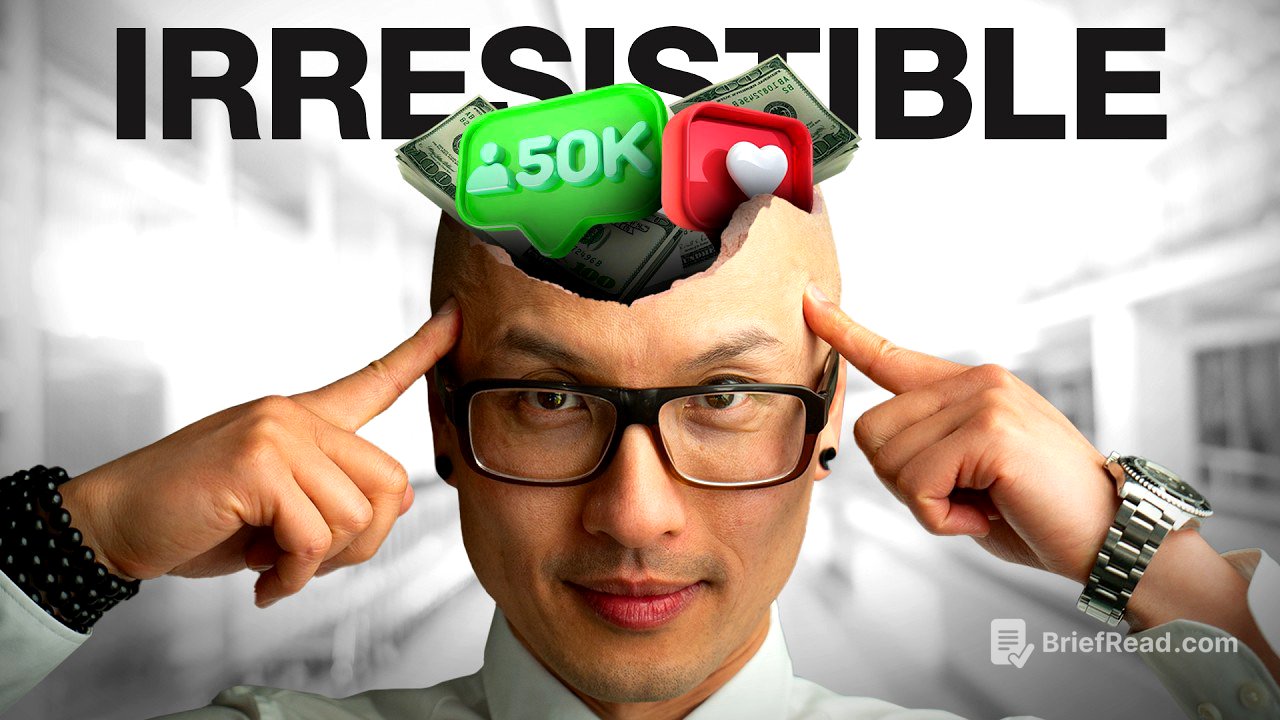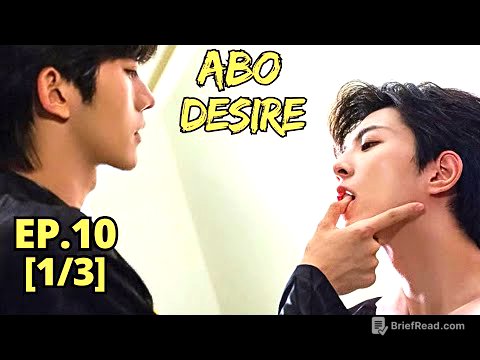TLDR;
This video outlines 10 rules for building a powerful personal brand. It emphasizes authenticity, leveraging your origin story, consistency across platforms, providing value, storytelling, emotional connections, continuous evolution, community engagement, personal growth, and building a movement rather than just gaining followers. The core message is to focus on genuine connection, continuous self-improvement, and offering value to create a lasting impact.
- Authenticity over image
- Leverage origin story
- Consistency across platforms
- Give value before you ask
- Storytelling over visual aesthetics
- Build emotional connections
- Stay relevant through evolution
- Engage your community
- Personal growth is the brand strategy
- Build a movement
Intro: 11 years, 1800 videos, and 1 mission [0:00]
After 11 years and over 1,800 videos, the author shares 10 rules for building a powerful personal brand. The author introduces the topic, setting the stage for a discussion on the key principles that have guided his journey and that he believes are essential for anyone looking to establish a strong personal brand.
Rule 1 [0:20]
The first rule is to choose authenticity over image. Many people create a persona to be accepted, burying their true selves. This creates a gap between the real self and the persona, which can lead to forgetting who you really are. The author uses the movie "Aladdin" as an example, where Jasmine is more interested in the authentic street rat than the fake prince. The lesson is to embrace who you really are, as people are more drawn to authenticity.
Rule 2 [1:50]
The second rule is to understand the power of your origin story. Your origin story is the easiest to tell because you've lived it. Consider where you were born, your parents, their occupations, and your ethnicity. This taps into cultural currency, which is shorthand for who you are. For example, the author shares his background as a Vietnamese refugee immigrant to the United States, highlighting common stereotypes and truths about his upbringing. He encourages bringing these aspects to the surface, as they warm over the audience and let them into your world.
Rule 3 [4:18]
The third rule is to maintain consistency across platforms. While you don't need to show all of yourself at once, the different spectrums of your personality should align with each platform. The author uses the metaphor of light filtered through a prism, showing different colors to different audiences. For example, Twitter requires brevity, while YouTube allows for a more conversational format. It's crucial to avoid being one person on one platform and another on a different platform, as this can reveal you as a fake.
Rule 4 [6:20]
The fourth rule is to give value before you ask for anything. Lead with generosity and do it for as long as you can. Building a brand and making money are different. Making money is transactional, while building a personal brand is about the impression people have of you. Honor people's time and attention by rewarding them with value. Share what you know based on your experiences, not just what you've read. Do personal development in private and teach what you discover in public.
Rule 5 [8:05]
The fifth rule is that branding is done through storytelling, not just visual aesthetics. A product or service without a story is a commodity. The author quotes Michael Margolus, who wrote the book Story 10x, emphasizing that in a world where high quality is expected, brand is the differentiator. The author poses the question of whether a better product with a horrible brand or a better brand with a not-so-good product wins, answering that the better brand wins because it has a better story. He uses Tesla as an example, noting that despite being great cars, sales have dropped due to the story being told about the company. The key concept is that facts tell, but stories sell, so tell your story from the heart with sensory details and dialogue.
Rule 6 [11:13]
The sixth rule is to learn how to build emotional connections that resonate with people at scale. This starts with authenticity, inner peace, and self-acceptance. People are drawn to those who have inner peace, self-awareness, self-acceptance, and self-love. Being vulnerable and transparent also helps, as it allows others to be themselves without judgment. The author advises against being showy or trying to impress others with material possessions, as true connection comes from inner qualities.
Rule 7 [13:07]
The seventh rule is that staying relevant requires evolution. The greatest gift as a human being is the capacity to learn, adapt, and evolve. The author contrasts this with people who are proud of never changing. He shares an example of his recent involvement in a TV show, which he would have been terrified of in the past. He emphasizes the importance of not having a self-story that limits who you can become. He also shares a story about a friend who viewed client work as a sign of failure, while he embraces it as an opportunity to learn and share with his audience.
Rule 8 [16:05]
The eighth rule is to engage your community, not just grow one. Many content creators use a "spray and pray" strategy, dropping content and leaving without engaging. The author uses the metaphor of hosting a party and then leaving. He emphasizes the importance of genuine connection and using the comments and engagement as the foundation for future content. Engaging with your community allows you to have a dialogue and build real relationships.
Rule 9 [18:20]
The ninth rule is that personal growth is the brand strategy. Everything you do is a rehearsal for the future. It's important to put in the reps, work on personal development, and learn. This allows you to connect dots and bring diverse knowledge to your content. The author shares a story of speaking at a real estate conference, where his pop culture references resonated with the audience. He emphasizes the importance of expanding your interests and having deep conversations with people outside your echo chamber.
Rule 10 [20:35]
The tenth rule is to build a movement, not just gain followers. Followers do what you tell them, while a movement feels involved in the decisions. A movement champions your cause and defends you. This involves enrolling them in a deeper purpose, your mission, and your why. The author shares The Futur's mission to teach a billion people how to make a living doing what they love without losing their soul. He positions The Futur as private art school without the crippling debt, furthering a system that elevates society through education.
Outro [22:26]
The author concludes by stating that following these 10 rules will help build a powerful personal brand. However, he teases that one critical mistake can negate all the progress, directing viewers to another video for that information.







![[ENG] 석삼이 형이 왜이리 무리해... (with. 러블리즈 예인)ㅣ지편한세상 타이어모어 편](https://wm-img.halpindev.com/p-briefread_c-10_b-10/urlb/aHR0cDovL2ltZy55b3V0dWJlLmNvbS92aS81NDZwOXJqU2hQMC9ocWRlZmF1bHQuanBn.jpg)
![Learn Python - Full Fundamental Course for Beginners | Python Tutorial for Beginners [2019]](https://wm-img.halpindev.com/p-briefread_c-10_b-10/urlb/aHR0cDovL2ltZy55b3V0dWJlLmNvbS92aS92X1M2NGtsZHJ5Yy9ocWRlZmF1bHQuanBn.jpg)
